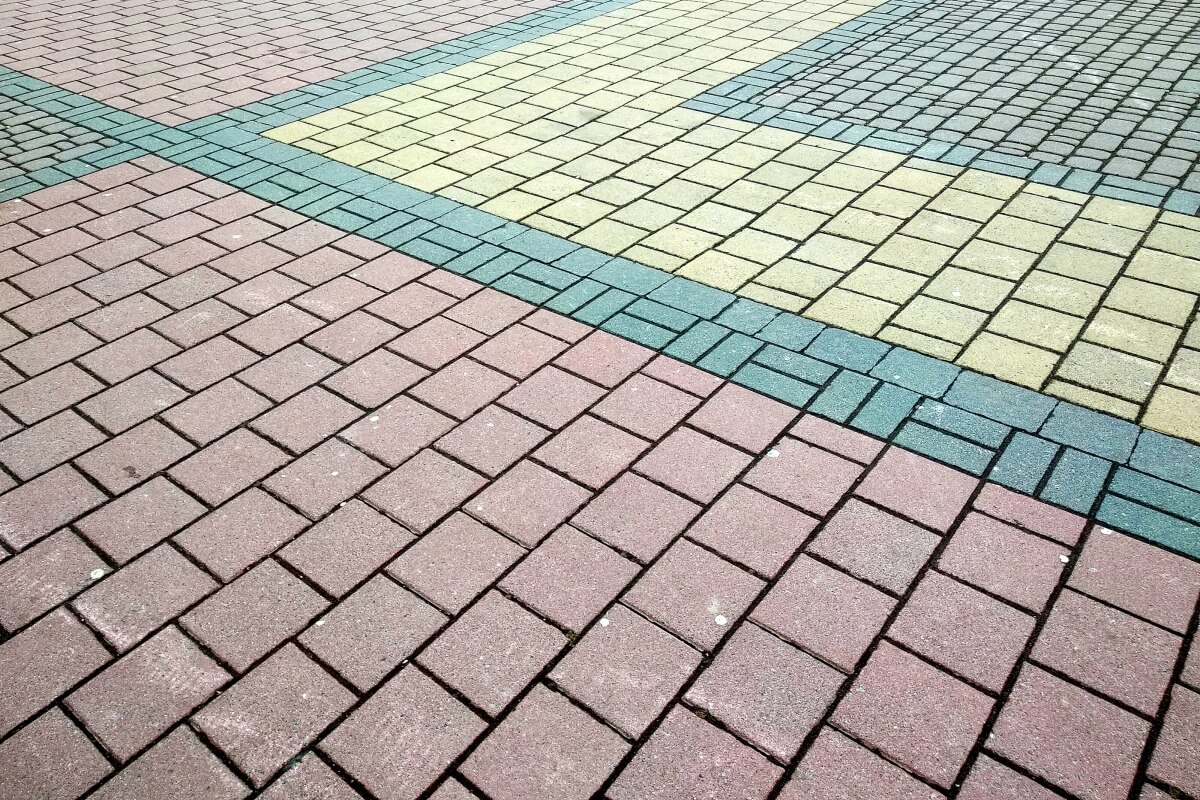Table of contents
- Basic unphased model
- What thickness of paving is the cheapest?
- Variable colouring, also in the form of colour mixing
- Type of paving and the price of paving
- What is the role of vibropressing?
- Most popular questions and answers
Often, when choosing paving stones, price is one of the main guidelines, so when looking for an economical version, it is important to get to know the standard models, made from common raw materials, without the addition of fine aggregates. Advanced technological lines make it possible to create high-quality products. With a slightly higher budget, interesting colour ranges obtained by colouring the concrete in the mass can provide variety.
Basic unphased model
The least expensive is the grey square paving block without the so-called chamfer, i.e. without bevelled edges. Simple moulds are used for its production, it does not require the implementation of additional processes, so it is less time-consuming and less expensive to produce than the chamfered or micro-phase version. It is suitable for use on private property, including the pavement next to the house, and can also be laid in urban areas in areas intended for pedestrian traffic. Therefore, if the target paving location meets these requirements, this option can be chosen.
What thickness of paving is the cheapest?
Chodzenie na ścieżkach i alejkach po kostce brukowej, bez użytkowania jej do częstych przejazdów autem lub do parkowania pojazdów, to również czynnik sprawiający, że można wybrać wersję w bardziej atrakcyjnej cenie. Tutaj wystarczy kostka cieńsza, na przykład czterocentymetrowa. Jeśli jednak ma powstać podjazd z możliwością parkowania auta, należy zdecydować się na grubość 6 centymetrów. Najbardziej kosztowna jest wersja o grubości 8-10 centymetrów, lecz na taką warto się zdecydować dopiero wtedy, gdy dana powierzchnia będzie poddawana obciążeniom większym niż 3,5 tony.

Variable colouring, also in the form of colour mixing
Concrete paving stones can be decorated with interesting colours. The grey model without pigments remains the most cost-effective, but if you accept a slightly higher price, you can choose from sand, red, brown, graphite or a combination of several different pigments in one mass. The dyes are usually created on the basis of iron oxides, so they are not soluble in water - this is especially important when dealing with rain, melting snow. They are dosed by computer to minimise colour differences in the final version, after the concrete has matured. The spot distribution of the pigments in the mould before vibro-pressing ensures that they do not mix together, are all visible, and produce a more attractive effect. Unlike paving made from natural stone, here inorganic pigments determine the final appearance of the pavement. Of course, they are completely safe and, like natural stone, resistant to the effects of the weather.
Type of paving and the price of paving
The total investment usually also includes the service of paving a given property or other area. The cost of the service is lower when the planned composition is simple, without patterns and shapes in the form of semicircles, circles or rosettes. Laying rows of ungrooved paving blocks in a uniform colour scheme is the quickest, with maximum repeatability. It is also not necessary to follow the sequential removal of material from the palette to minimise the impression of differences in tonality, if the overall colour is grey, with no undertones.
What is the role of vibropressing?
The aforementioned vibropressing is a process also used in ABW Superbruk, which ensures the high efficiency of the production lines. The forces acting during this process ensure that the voids between the concrete particles are filled and the air is removed. The elements formed in this way thus have a defined shape and thickness, as well as the desired performance characteristics from compressive strength to stability on a properly operated surface. They can also be offered at an attractive price, which complements the factors influencing the choice of classic paving blocks.
Most popular questions and answers
What are the advantages of classic paving?
Classic paving is economical, durable and aesthetically pleasing. It is ideal for private properties and public spaces. It is easy to install and available in a variety of colours.
What thickness of paving stone to choose?
For footpaths, 4 cm thick paving blocks are sufficient. For driveways and parking areas, 6 cm thick paving blocks are recommended, and 8-10 cm for areas subject to heavy loads.
What are the costs of laying paving stones?
Paving costs are lower when the planned composition is simple, without patterns or complex shapes. Grey ungrooved paving blocks are the cheapest.
What is vibro-pressing and what is its significance?
Vibropressing is a process in which the concrete mass is formed under vibration and pressure, which increases the strength and durability of the pavers. It removes air from the concrete mass, which improves its performance.
What colours of paving are available?
Grey cube is the most cost-effective, but colour versions such as sand, red, brown, graphite and colour mixtures are also available. The colour is achieved by adding iron oxide-based pigments.